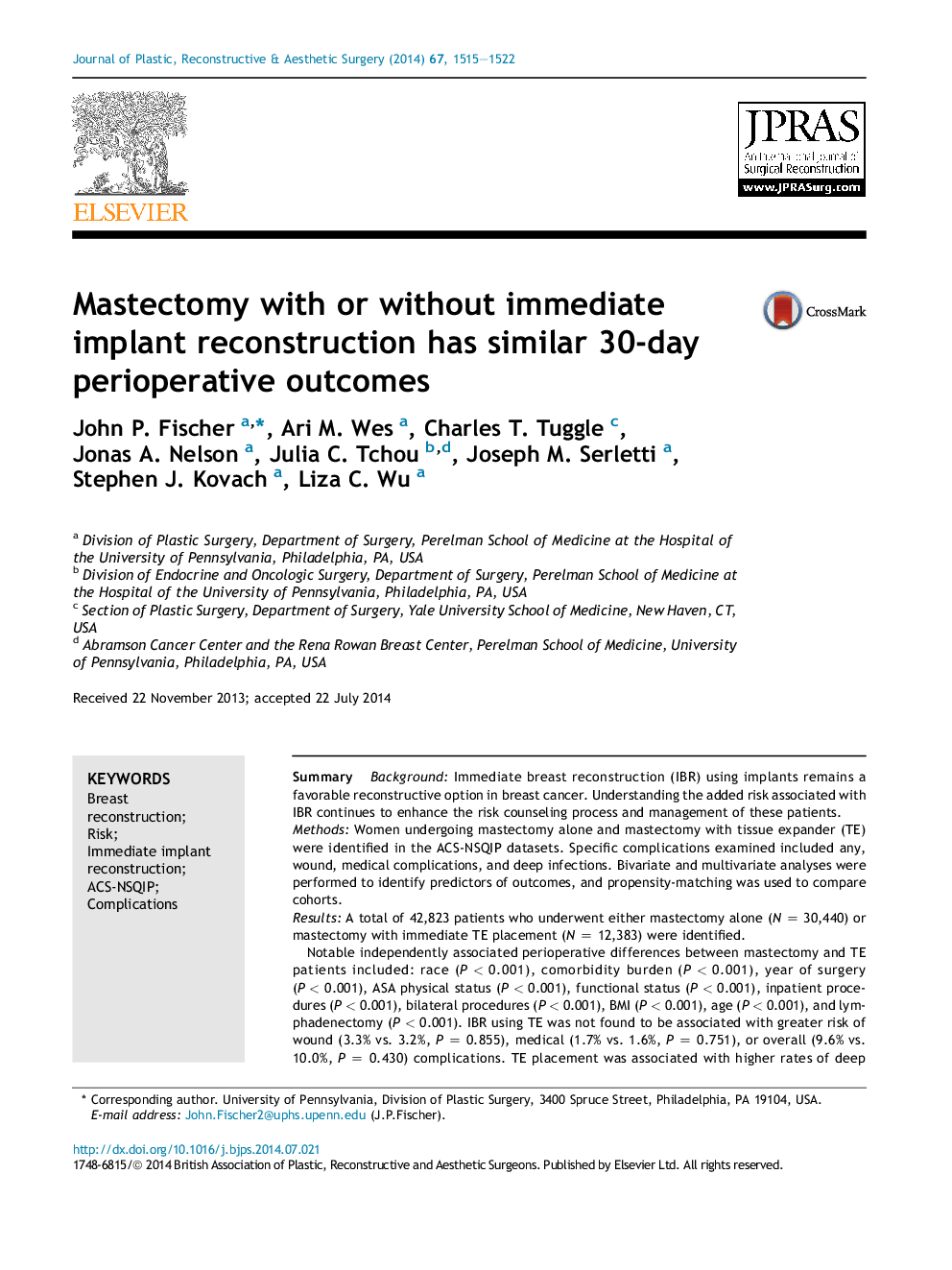| Article ID | Journal | Published Year | Pages | File Type |
|---|---|---|---|---|
| 4118533 | Journal of Plastic, Reconstructive & Aesthetic Surgery | 2014 | 8 Pages |
SummaryBackgroundImmediate breast reconstruction (IBR) using implants remains a favorable reconstructive option in breast cancer. Understanding the added risk associated with IBR continues to enhance the risk counseling process and management of these patients.MethodsWomen undergoing mastectomy alone and mastectomy with tissue expander (TE) were identified in the ACS-NSQIP datasets. Specific complications examined included any, wound, medical complications, and deep infections. Bivariate and multivariate analyses were performed to identify predictors of outcomes, and propensity-matching was used to compare cohorts.ResultsA total of 42,823 patients who underwent either mastectomy alone (N = 30,440) or mastectomy with immediate TE placement (N = 12,383) were identified.Notable independently associated perioperative differences between mastectomy and TE patients included: race (P < 0.001), comorbidity burden (P < 0.001), year of surgery (P < 0.001), ASA physical status (P < 0.001), functional status (P < 0.001), inpatient procedures (P < 0.001), bilateral procedures (P < 0.001), BMI (P < 0.001), age (P < 0.001), and lymphadenectomy (P < 0.001). IBR using TE was not found to be associated with greater risk of wound (3.3% vs. 3.2%, P = 0.855), medical (1.7% vs. 1.6%, P = 0.751), or overall (9.6% vs. 10.0%, P = 0.430) complications. TE placement was associated with higher rates of deep wound infections (2.0% vs. 1.0%, P < 0.001) and unplanned reoperations (6.9% vs. 6.1%, P = 0.025). Additionally, the rate of 30-day device loss was 0.8% in patients receiving reconstruction. Multivariate conditional (fixed-effects) logistic regression analysis failed to demonstrate significantly associated independent risk of wound, medical, or overall complications with the addition of TE.ConclusionsUndergoing IBR with TE placement does not confer added risk of wound, medical, or overall morbidity relative to mastectomy alone based upon propensity-matched 30-day complication rates in 15,238 patients from the 2005–2011 ACS-NSQIP datasets. These findings further confirm the safety profile of prosthetic-based IBR.Level of evidence: Prognostic/risk category, level II.
